
Randall Reeves Resting Before Imminent Return to the Bay
We feel confident in saying that Randall Reeves is about to complete his ambitious Figure 8 Voyage, though he has yet to cross the official finish line. We’ll paraphrase from our first conversation with Reeves in 2017 about his post-voyage philosophy and routine: “After a long time at sea, I like to anchor at Drake’s Bay before sailing under the Gate,” Reeves said, referring to his 12,000 singlehanded Pacific cruise in 2010 aboard his Far East Mariner Murre. “After being alone at sea for weeks, it can be a bit shocking to suddenly be in a car going down a six-lane freeway through the city.”
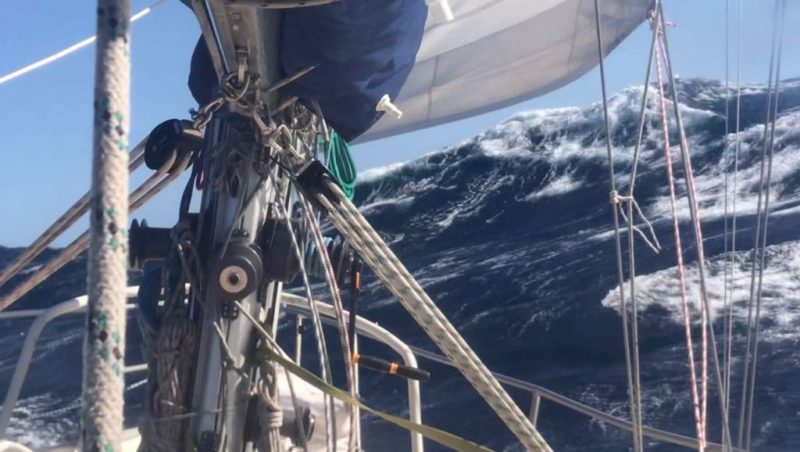
Reeves arrived in Drake’s Bay last week, and will sail under the Golden Gate on Saturday, October 19. We’ll share the details about the official reception in a moment.
First, a quick recounting of Reeves’ last year. A circumnavigation of the Southern Ocean, and a (near) circumnavigation of the Americas, which, of course, included transit of the Northwest Passage. Reeves made good time through the Gulf of Alaska to arrive at the Bay’s doorstep for the ‘final leg’. From his tracker, it appears that Reeves and Moli have gone from Drake’s to Bodega Bay.
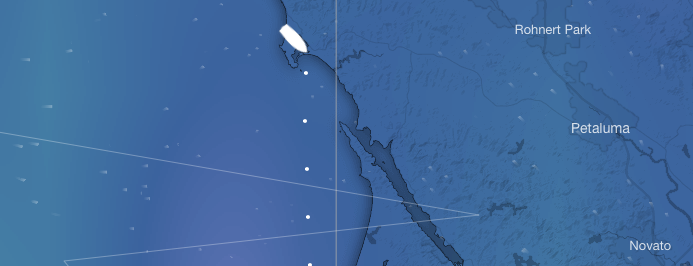
Before he made landfall on the West Coast, a final gale put him and his 41-ft sloop Moli to the test. “Again and again Mo is pushed over by a crasher. If it catches her on the flank, there is the sound of a cannon and then green water flows over the house. Many times the leeward windows go under and the cockpit scoops up a sea . . . That I have chosen to put Mo in harm’s way so close to home, that having been through so many gales, I could mistake the power of this one — this angers me. But the anger does not cover a low and gnawing fear. Could we fail to make it home at all?”
While intense, the gale was short-lived. “I relax a little. I prop myself into a corner and watch. By evening the barometer is still dropping but the wind has come down. The rigging no longer wails. I have unrolled the jib. We fly homeward over dark seas licked by moonbeams.” Reeves slipped into Drake’s Bay practically unnoticed as the Bay prepared for Fleet Week.
It is difficult to state the significance of Randall Reeves’ soon-to-be-completed Figure 8. Sailors circle the word all the time, but few choose routes so long, unique and mind-bogglingly challenging — and few sailors have documented their voyages with such candor and humility. As Bay Area sailors, we cannot begin to express our pride and admiration for what Randall Reeves has done.
We hope that the sailing community will show their support for Reeves and his remarkable accomplishment. Let’s give him a proper West Coast welcome.
October 19’s event details, timelines, and opportunities to RSVP:
There is one RSVP invitation for the “shore” event at the Sausalito Yacht Club. If you are planning on attending you must RSVP on the invite or we’re not going to be able to let you in. If we don’t have your name (and the number of guests you’re bringing) on the list, we’ll be making sad faces. We don’t want to make sad faces.
11.30 a.m. Moli / Randall estimated arrival at Mile Rock.
Flotilla: Plan to be out there. Please note we will have two to three media boats with cameras etc. People on land: You can drive out the Headlands and watch / take photos of Randall coming in. It’s quite a view but note that he won’t be able to see you. You’ll be too high up/tiny.
12.30 p.m. Moli / Randall estimated sailing under the Golden Gate Bridge.
Flotilla: Please stay on Moli’s starboard side so the folks on land can get their photo opportunities. People on land: We’ll be on the breakwater at the end of Travis Marina/ Point Cavallo. Lots of parking around the Bay Area Discovery Museum. Limited parking at Point Cavallo. It’s a short walk from the Bay Area Discovery Museum.
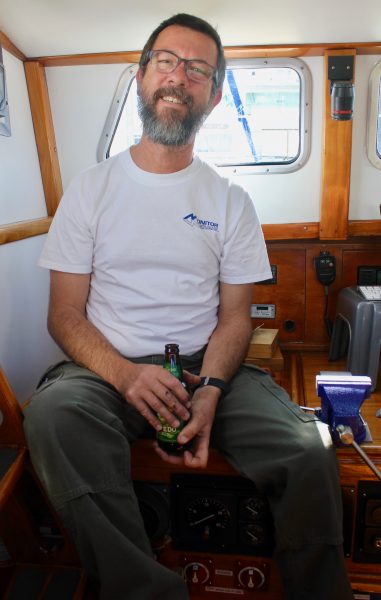
Final notes and next steps:
We already have several requests from multiple locations and groups for Randall to come in and speak about his adventures. If you’re interested in joining we’ll be posting the opportunities on the site, so stay tuned. If you have a group or organization that might be interested in hearing Randall speak about his adventures please feel free to reach out.
Remember to RSVP to the Yacht Club Event if you plan to attend.
This story originally included a information about an event at Sausalito Yacht Club — that gathering is now sold out.
Mini Transat Drifts into Gran Canaria
The first boats finishing Leg 1 of the Mini Transat La Boulangère began trickling into Las Palmas in the wee hours on Sunday. Light air dominated during the last day, allowing some of the solo sailors to catch up to the leaders and giving the Production class an unusual chance to beat some of the Prototype boats.
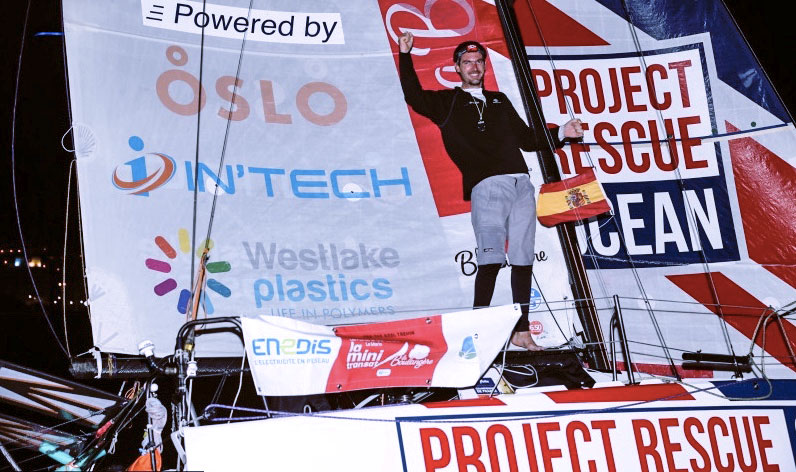
Frenchman Axel Tréhin crossed the finish line first after 8 days and 17 hours of racing. Only 6 minutes behind him was Frenchman François Jambou. Drifting into third place was (wait for it) another Frenchman, Tanguy Bouroullec. The amazing thing was that only 26 minutes separated first from third place after 1,350 miles of racing. The Production class saw Italian Ambrogio Beccaria finish first after 8 days, 19 hours of racing — only two hours behind the top Proto finishers. Andare Italia! Frenchman Félix De Navacelle secured second place, and Frenchman Matthieu Vincent rolled into third.
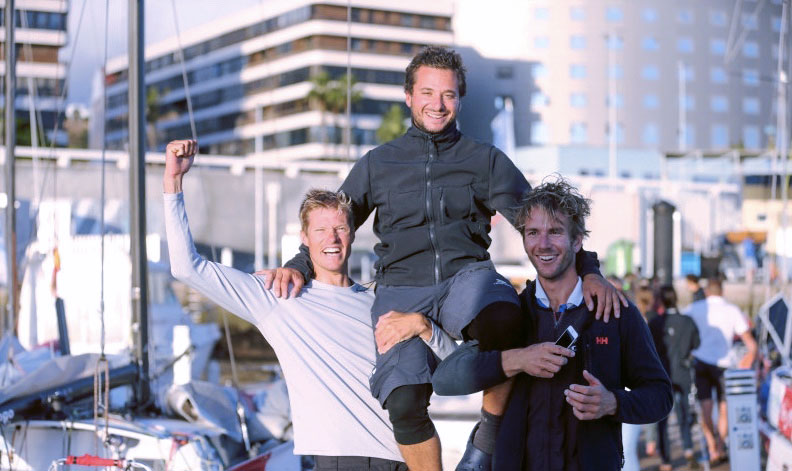
The top women skippers in both classes showed well. Frenchwoman Marie Gendron placed fourth in the Proto class and Amélie Grassi (yep, she’s French too) came in fifth for the Production boats.
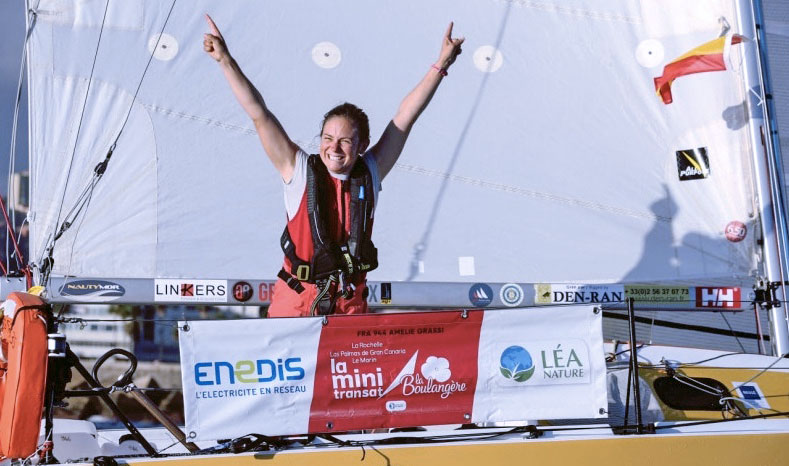
It wasn’t an easy race for some of the 21-ft Minis, with a few abandonments and others heading to the nearest port for repairs to electrics, autopilots and mechanical stuff. Czech sailor Pavel Roubal even had to be airlifted off his boat when he hit something hard and cracked the transom. The boats are still finishing. The next big step is a true Mini Transat across the Atlantic from the sunny climes of the Canary Islands to the sunny climes of the Caribbean. See www.minitransat.fr/en to follow along.
Special Pricing at Wayfarer Marina
The Big and Small of the Annapolis Boat Show
We just arrived back from our annual pilgrimage to the Annapolis Boat Show. Held every year on Columbus Day weekend (the last day is today), this sailing extravaganza is alleged to be the world’s largest all-sail boat show, with almost 200 sailboats on display. For any sailor shopping for a big boat it’s a unique opportunity to see almost any boat you’d want to consider while you also revel in one of the most sailing-soaked towns anywhere during the idyllic month of October.
This year was the 50th running of the show. Once again, we return to California inspired by the dynamism of the sailing industry and the passion of the sailing community. We spent a full four days walking the show from the 10 a.m. opening bell to the 6 p.m. closing cannon. We always leave wishing we had more time to work through all the displays and catch up with everyone we go to see while there.
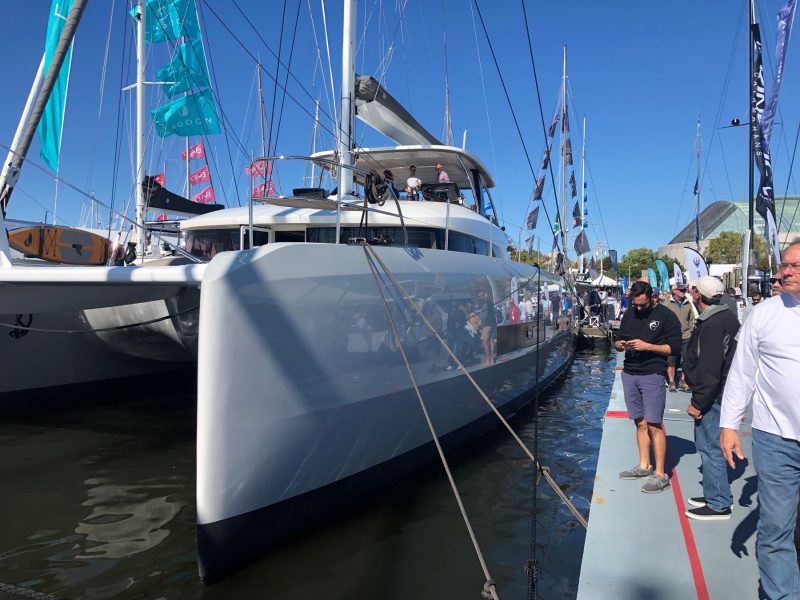
We collected a few notes for a couple of installments about the show. One of the biggest things we noticed as we hit the docks was that the boats seem to get bigger every year. The Lagoon 77 catamaran towered over everything with what looked like 10- to 12-ft freeboard and a top deck far overhead. It’s huge. However, on the other end of the spectrum, there was more participation from small boats, where the ratio of cabin to cockpit shifts to small interiors and comfortable cockpits. These elegantly crafted, high-end daysailers were tucked in between the fleets of enlarging mono- and multihull cruisers. The multihull contingent continues to grow in both numbers and scale.
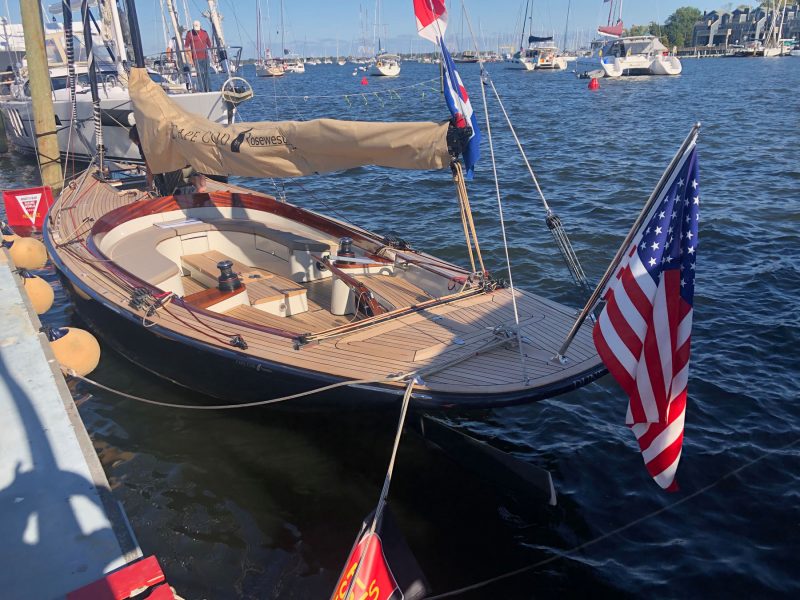
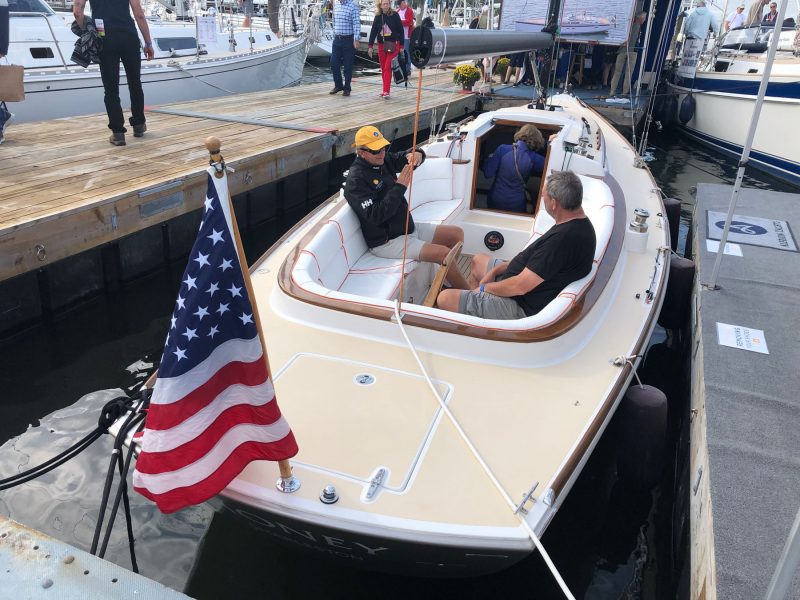
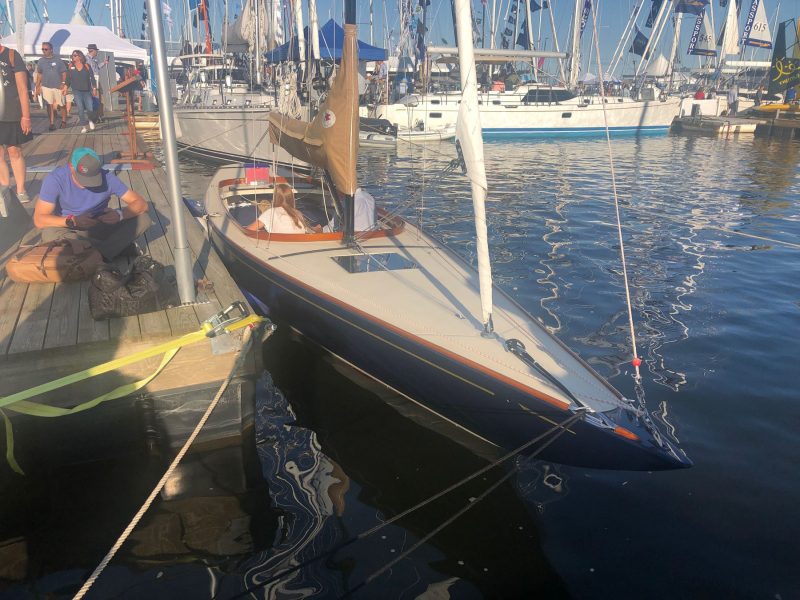
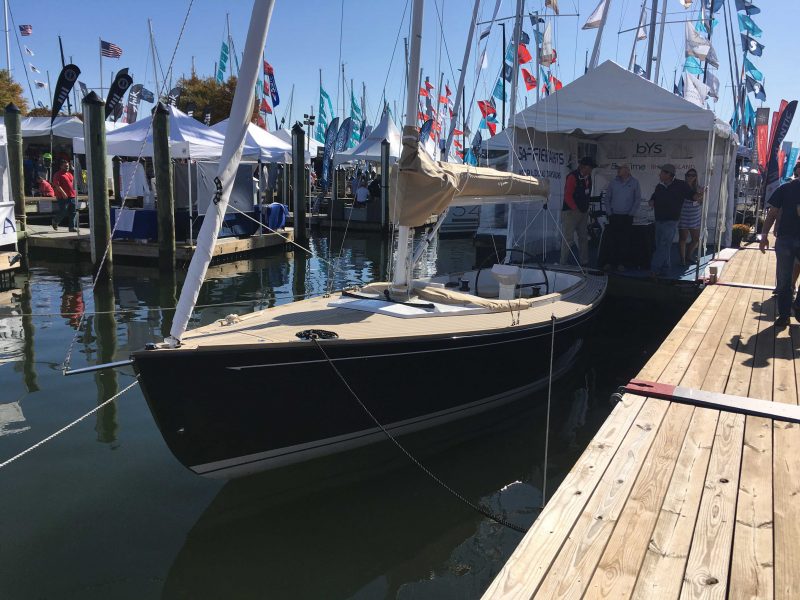
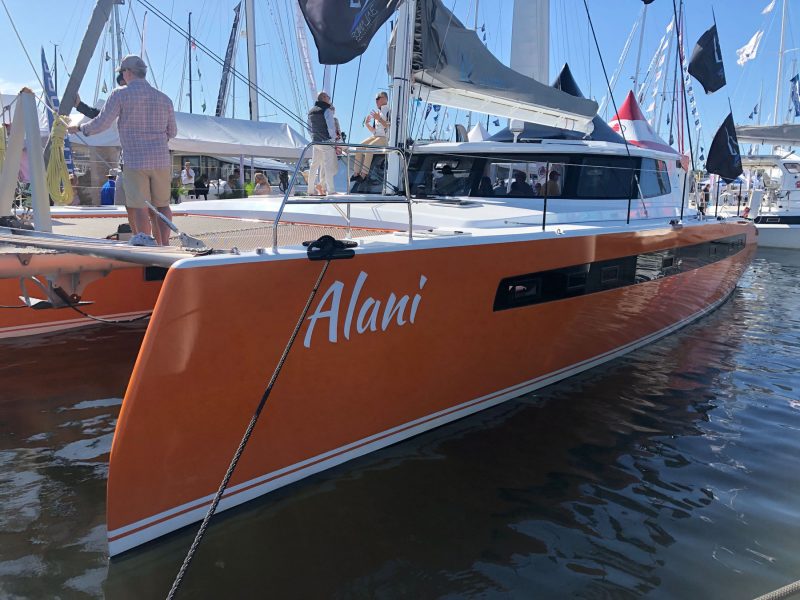
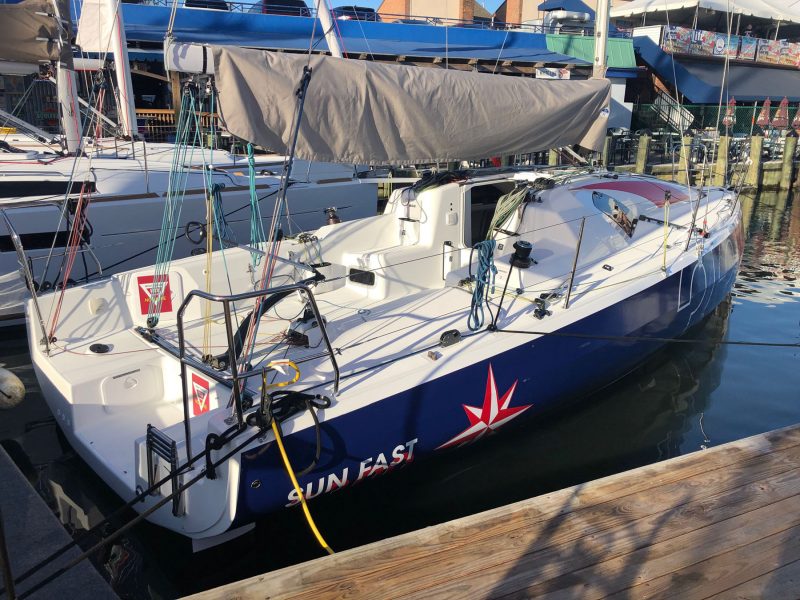
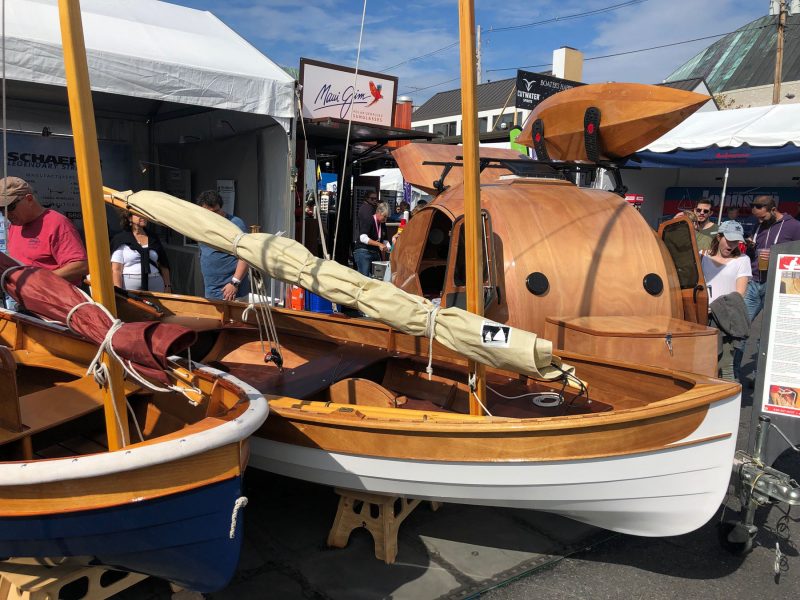
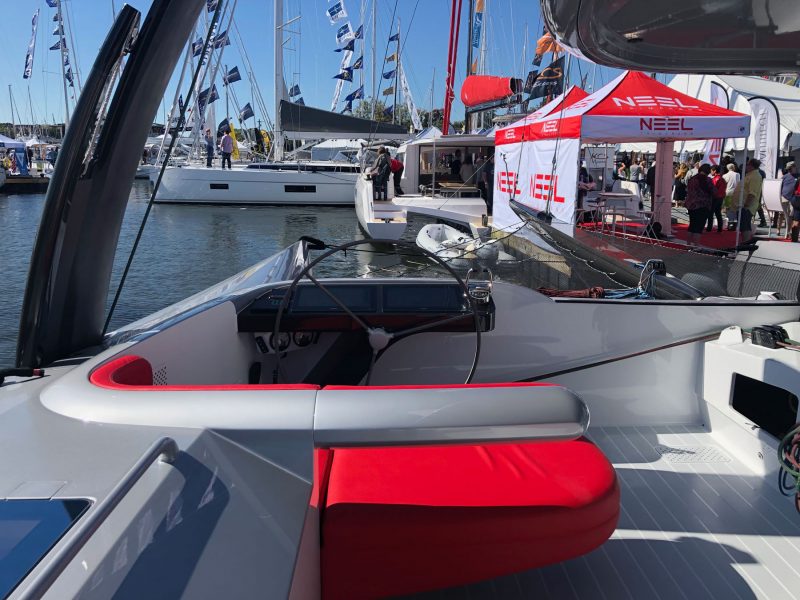
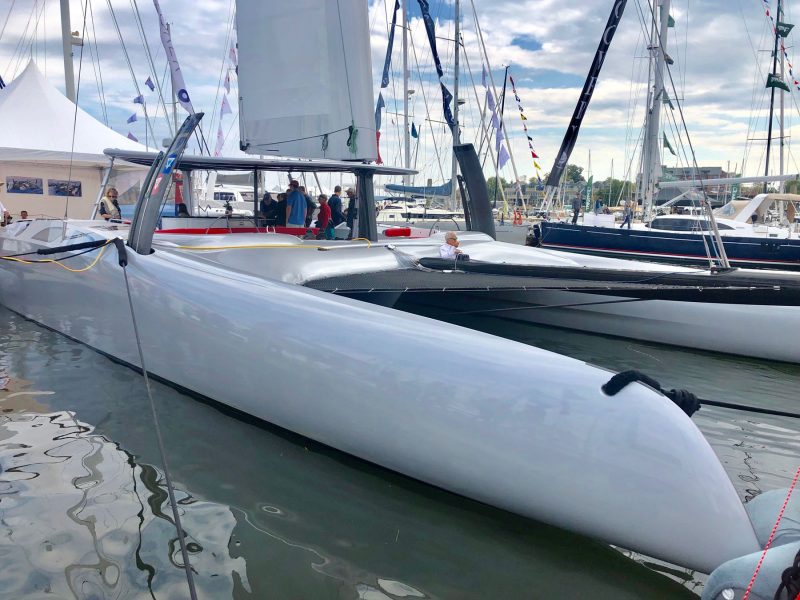
Off the docks, in the midst of the endless collection of gear and accessories, there’s a healthy representation of small boats and sailing dinghies. We checked out the Melges 14, the Nacra 15, the RS21, the wooden boat kits from Chesapeake Light Craft, a sparkling new Flying Scot, Com-Pac yachts and numerous other small boats tucked in among the displays.
Annapolis is one of those towns where the sailing culture is happily inescapable. In any normal week of the year, the sailing is pervasive, but, during the boat show, it becomes like Mardi Gras in New Orleans, but built around the world of sailing. It’s always a rewarding and inspiring trip. We’ve had to leave out about 180 other sailboats from this random collection of shots, but, if you want to see sailboats, put Columbus Day 2020 on your calendar for next year. More to come.
In a Land Named for a Mariner
Today, we’d like to celebrate an ancient mariner who is often credited with ‘discovering’ a great land. He didn’t really discover this land — there were generations of people long before him — but his name carries such weight and import that he become recognized, even synonymous with the place where he lived, navigated the waters, fought, and died.
His name is Chief Marin.
“Chief Marin was a Coast Miwok Indian who lived in the first half of the 19th century, a boatman or mariner valued for his knowledge of the tides who became an official witness at baptisms and weddings at Missions Dolores and San Rafael Arcangel,” wrote the Marin Independent Journal in 2007. “And he struggled with the Spanish military, which twice put him in prison at the Presidio.” The Journal was writing about a new book at the time: Chief Marin: Leader, Rebel, and Legend, a History of Marin County’s Namesake and His People, written by College of Marin anthropology teacher Betty Goerke. We have not yet read the book, and can only find cursory references to Chief Marin’s on-the-water prowess. Goerke said the newly arrived Spanish clergy needed Marin “for his gifts: his ‘leadership ability, intelligence, navigational and maritime skills, knowledge of Spanish and the respect he received from other Indians and the military.'”
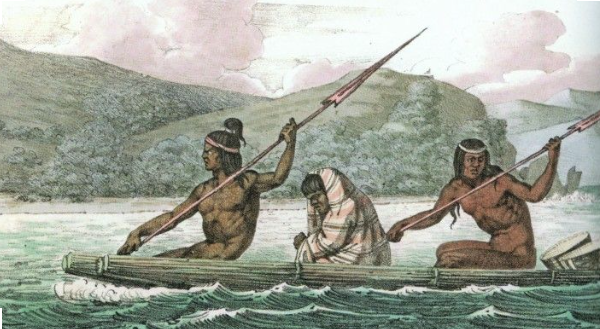
We have always found it easy to imagine a time when Chief Marin and the Miwoks lived in the Bay when we’re sailing out of San Rafael, which is quiet and relatively empty compared to the Central Bay. Every time we pass the Marin Islands (as we did this weekend), we can’t help but think what life was like 150 years ago before the traffic, buildings, powerboats and Blue Angels. Even on a ‘busy’ holiday weekend — with nearly 10 boats anchored at China Camp — the shores of San Pablo and San Rafael bay feel placid, ancient and permanently frozen in time. The drone of freeways rimming the Bay is noticeable, but not un-symbiotic with the lapping of the waves and echoes of birds. Even the occasional guttural roar from a flock of F/A-18 Hornets can fit the mood.
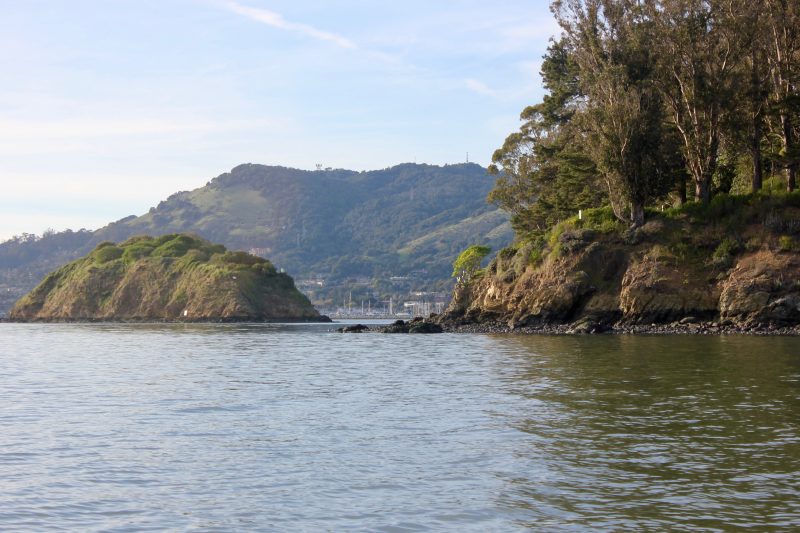
Of course, these are all just narratives we like to tell ourselves. As with many Native American legends, details are sparse because the stories were generally word of mouth, or have been sculpted by the forces exerted over time by the dominant culture and its version of history.
Along with the Chief Marin narrative regarding the county’s namesake, Marin Magazine suggested another hypothesis in a 2018 article: “Going back centuries, several minor saints were dubbed Marius, implying ‘of the sea’. Over time, Marius became a Roman family name. As the years passed, the Italian derivative Marino emerged as did Marin, the Spanish adaptation. One possibly valid genesis for the name Marin took place in 1775, when Spanish naval lieutenant Juan Manuel Ayala became the first European to enter San Francisco Bay. While spending 40 days charting the Bay’s surroundings, Lt. Ayala named the inlet between what is now Marin’s San Pedro Point and Point San Quentin Bahia de Nuestra Señora del Rosario la Marinera, meaning Bay of Our Lady of the Rosary, the Mariner. Many assume that Marin became an abbreviation of that rather lengthy nomenclature.”

Marin Magazine acknowledged the Chief Marin legend, but was confounded by the myriad namesake possibilities. “Many historians claim [Chief Marin’s] nickname was El Marinero, which alludes to Ayala’s 1775 naming of a Bay in what is now Marin County. So which came first? Obviously, the Bay did. Adding to the confusion, the name Marin is of Latin or Spanish origin, hardly part of the Coastal Miwok Indian lexicon, a tribe to which the chief supposedly belonged. Would any Indian chief, real or supposed, allow that to occur?”
History has been and remains in the eye of the beholder.


